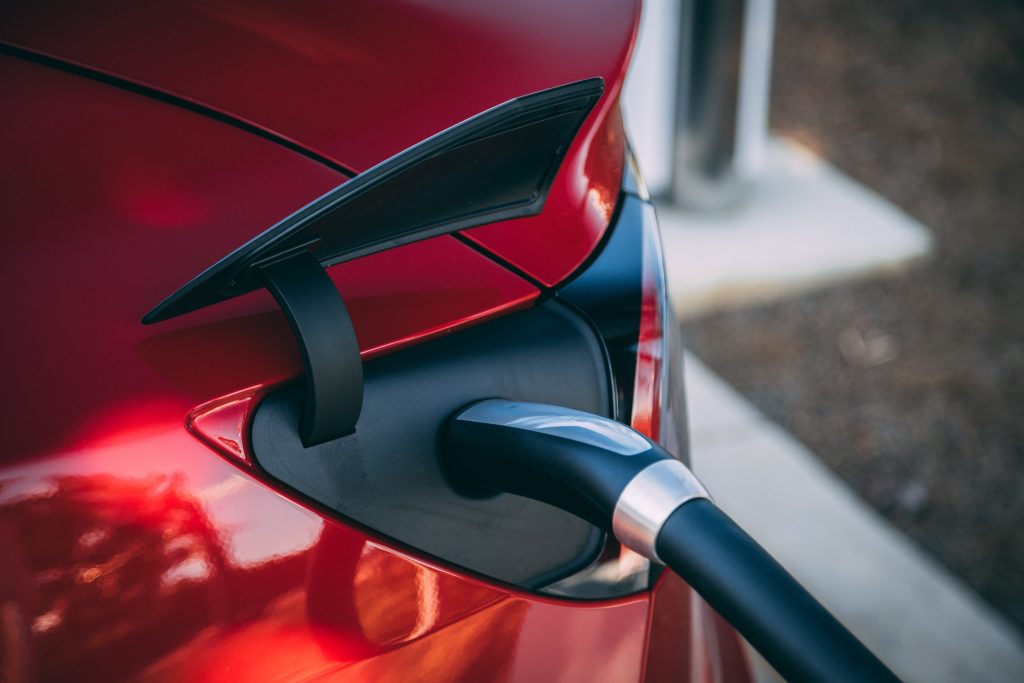By: Otaiba Ahsan

If you’re considering buying a Tesla Model 3, it’s important to understand how long it takes to charge the battery. There’s no single answer to this question, as there are several ways to charge your car and they all vary in charging time. So how long does it take to charge a Tesla Model 3? Continue reading to explore the different charging options for your Model 3, the time it takes to charge, tips and more!
Charging Options for Tesla Model 3
1. Supercharger: One of the biggest advantages of being a Tesla owner is having access to its vast network of superchargers. For a long time, these supercharging stations were exclusive to Tesla, but they’re now slowly being opened to other electric vehicles (EVs) as well. Superchargers are typically found directly off major highways and at other high-traffic areas like casinos, resorts, and more. This is the fastest way to charge the Model 3, as you can get your car’s battery up to 80% in under 30 minutes. Keep in mind that charging past 80% on superchargers becomes much slower to safeguard battery health.
2. Destination chargers: These are third-party chargers located at places like hotels, restaurants, mall parking lots, and at other businesses. They provide slower charging times than superchargers but can be a convenient option if you’re going to be parked for an extended period. A resource I’ve personally found extremely handy is the Plugshare app and website, which can provide you with locations on destination chargers in your area.
3. Home charging: While all EV owners aren’t able to set up a home charging solution, the ones who do, often rave about the convenience and peace of mind being able to charge at home. Typically, home charging is set up in your property’s garage. However, if you live in an apartment or condo complex, you can request the building to put in EV chargers and in many cases, they can accommodate. Having a Charging Cable Holder is vital if you have a charger in your garage.
Types of Charging for Your Model 3
So how long does it take to charge your Tesla Model 3? Well, it depends on what level charging you’ll be using…
1. Level 3 charging: Level 3 charging, also known as direct current (DC) fast charging is a high-power charging method that allows your Tesla to be re-juiced at blazing speeds. The most common level 3 chargers used by Model 3 owners are in fact the Tesla superchargers, which can add up to 282 km of range in just 15 minutes and get your car from near 0% to 80% in under 30 minutes.
TIP: When planning to supercharge, make sure to precondition your Model 3’s battery ahead of time. As long as your Tesla Maps knows you’re heading to a supercharger, it’ll begin preparing the battery for charge. You’ll see a little message notifying you. Once you get to the supercharger, try and snag a spot at a stall that doesn’t have another car charging at it, as you won’t have to share the energy source and you’ll get a faster charge.
2. Level 2 charging: Level 2 charging is what you’ll see at home or at a lot of destination chargers. Focusing on home charging, typically people get either the Tesla wall connector or NEMA 14-50 outlet installed. Regarding charging speed, the wall connector can charge at 48 amps and has a speed of 77 km added per hour. The NEMA 14-50 outlet, also known as the “dryer outlet” works at 32 amps and adds 48 km of charge per hour. Destination chargers will typically charge at similar speeds.
TIP: Charge to between 80% and 90% daily to avoid faster battery degradation, and make sure to only charge during off-peak hours to maximize savings on your energy bill. Open the Tesla app, hit “Charge Stats” then “Settings” which will allow you to add energy costs at different times. Once you’re set up, you’ll be able to see exactly how much your level 2 charging costs, and more importantly, how much you’re saving!
3. Level 1 charging: Known as “trickle charging” due to its extremely low current, level 1 is the most basic and slowest type of charging. It draws power from any 120 V outlet, the same outlets we plug our phone chargers in, and can add between 3 to 6 km of charge per hour. The only upside of this type of charging is convenience, as nothing has to be installed for you to use it.
The Bottom Line
Charging times for the Tesla Model 3 vary depending on several factors. Superchargers offer the fastest charging times but cost more than home charging with a level 1 or level 2 setup. The key takeaway for everyone should be to find a solution that’s best suited for them. For me personally, level 2 home charging is the most convenient and cost-effective solution. However, if you’re always travelling, then you might have to rely on superchargers or destination chargers.
